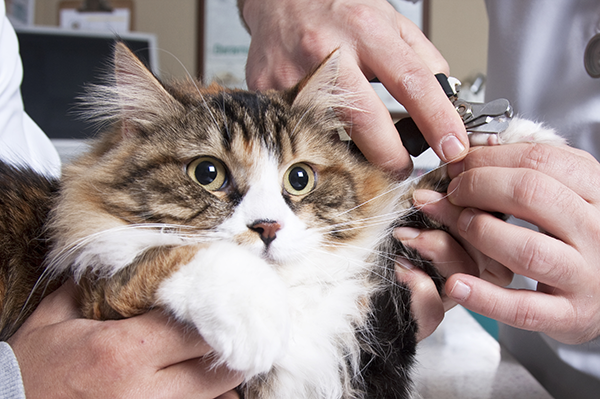Causes of Paw & Nail Disorders

Does your cat lose pieces of its claws? Does your dog have brittle or broken nails? If so, read on. Some paw and nail issues are fairly normal, and some are signs of a deeper problem.
Minor Issues
Many pets have slightly brittle nails. From time to time, you might notice chips or cracks in the claw. Perhaps they snagged their nail on the carpet, or nibbled at it a little too vigorously. You may also see calluses on the feet, which are usually just a normal part of the foot pads.As long as small nail and paw issues don’t seem to bother your pet, and the claw bed doesn’t look infected, you may be in the clear. Check with your vet if you’re not sure.
More Severe Nail Issues
Sometimes your pet’s nail issues go beyond a minor bother. A disorder of the bed and nail is called dystrophy. In fact, there are so many types of dystrophy, it’s divided into categories:
- Onychomadesis is sloughing of the nail.
- Onychorrhexis is severe brittleness.
- Onychodystrophy is abnormal claw shape.
- Macronychia refers to nails that are unusually large.
- Onychitis describes inflammation within the claw.
- Paronychia is inflammation of the nail fold.
- Onychoschizia is splitting of the nail.
- Onychomalacia is softening of the claw.
Some of these issues may be present from birth, like unusually large claws, and some develop over time, like splitting and softening. Many pet owners feel unsure about the level of seriousness, and finally make a vet visit when they notice nail loss or active bleeding from a wound.
Paw Problems
If the problem isn’t with the nail, but with the paw itself, it might be a little more difficult to see what’s going on. Your pet’s fur could cover the issue, or they might slink away from you.At the vet’s office paw problems are usually diagnosed as one of the following types:
- Lacerations are rips in the skin.
- Punctures are deep wounds that often come with secondary infection.
- Infection is caused by bacteria, which is introduced by injury or licking.
- Abrasions are scrapes, usually superficial.
- Burns are caused by heat and chemicals.
- Frostbite comes from extreme cold weather.
- Allergic reactions cause swelling, itchiness, and pain.
- Infestation occurs when fungus or parasites are present.
All of the issues above should be addressed by a veterinarian as soon as possible. Frostbite, for example, can cause fast skin death on the toes and pain as your pet walks. Punctures can hold foreign objects that cause infection deep within the paw.
Warning Signs
When nail and paw issues begin, your pet might show unusual behavior or fatigue. Anxiety is also common, because pets can’t tell us what’s going on. They just know something feels painful.
Keep an eye out for these warning signs:
- Limping or lameness while walking
- Constant licking at the paws
- Yipping or yelping while walking, or when you touch them
- Swelling, redness, and warmth around the paw and nails
- Wound or deformity in the nail plate (the part that lays over the nail bed)
- Abnormal nail color
- Excessive sleeping or panting, which can be a pain response
Concerned about your pet’s paws? Connect with Academy Animal Hospital for an evaluation.
